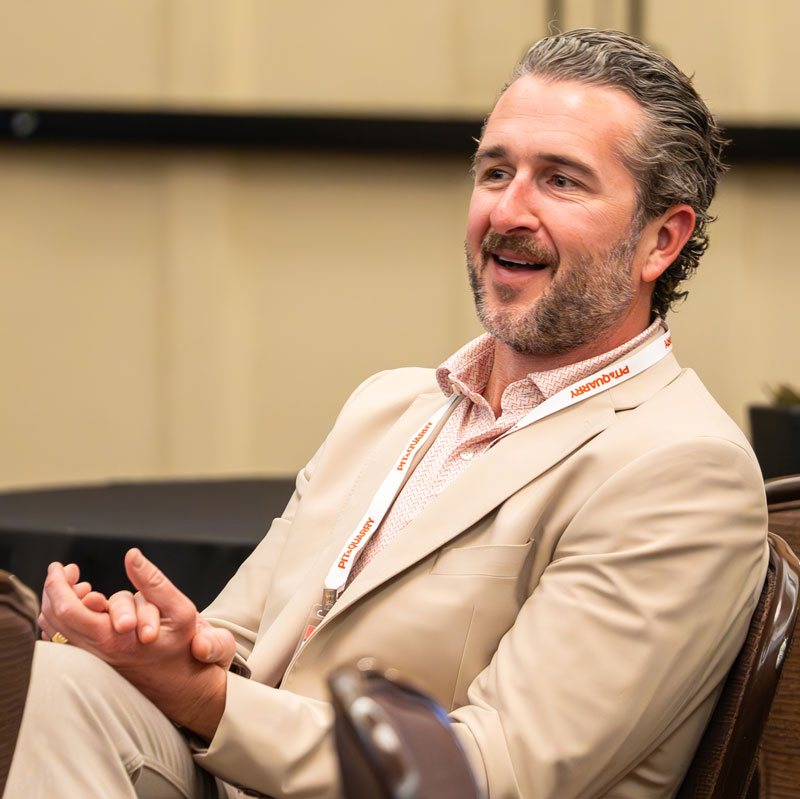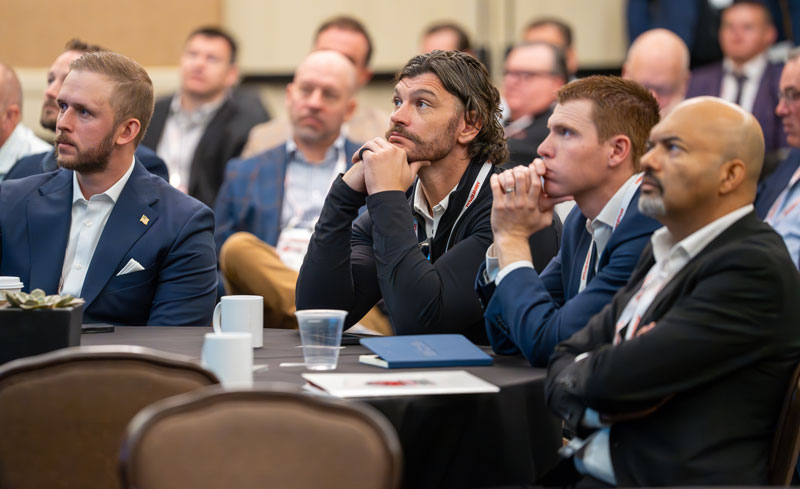The following transcript was edited for brevity and clarity from one of two concurrent Jan. 31 discussions at the 2025 Pit & Quarry Roundtable & Conference at The Wigwam Resort. Part 2 can be found here.
JACK KOPANSKI (PIT & QUARRY): For producers: How are you preparing for your company’s future? Are you exploring AI or further digitalizing equipment? Are you considering going electric for fleets or processing equipment? Is there interest in or a potential future in one or more of these areas?
For suppliers: How are you integrating technology into your traditional business model to stay competitive and drive innovation? What are some other trends you are seeing, and are you seeing a drive toward bigger or smaller equipment?
JONATHAN HART (WASHINGTON ROCK QUARRIES): For our facility, we saw the need to expand operations about three years ago. We came across some good equipment that was available for sale, and we jumped on the purchase. We’re just now basically finishing two years of upgrades to effectively double our capacity.
As we look right now at technology and current offerings, what we see in the future is that the relationship between the producer and the manufacturer is all going to be about ROI metrics.
What’s the return on investment going to be? How fast is it going to be? And how much more material – or better aggregate material – are we going to be able to produce for what we’re getting? The more rock and sand and gravel you can produce with the least amount of people, the better off your operations are going to be.
In the future, I can see a lot more locations eventually going offline because they’ll use up their reserves. Due to political considerations, you’re going to see fewer sites that produce rock. Still, those sites will be bigger, because companies are going to focus on how much rock they can produce every hour with the least amount of input possible.
For us, that’s kind of what we’re looking at. It’s how we can increase our productivity without having to increase our head count and the amount of equipment we can have. It’s how we can get the best return on investment that we can.
JAMIE JONES (CAPITAL AGGREGATES): Just like Jonathan said, we’re focused on making our plants more efficient and monitoring situations before something happens so you can get out in front.

One thing we haven’t figured out how to get past, though, is whenever a plant breaks down, we still need people there. We’re building a lot of autonomous type of things, but we still haven’t been able to get through the pricing point where it makes sense.
PATRICK WEAVER (L&H INDUSTRIAL): We are known for manufacturing repair and services. We made a shift about six years ago to move toward the technology side. I think companies that aren’t getting on that bandwagon in the manufacturing area won’t have a company five or 10 years from now. Technology is moving that fast.
PADRAIC DILLON (BULKSOURCE): We are a software company, and I just joined them about a month ago. I kind of ‘came off the bench.’ I sold my business to Heidelberg [Materials] over the summer.
The rock business is an antiquated business in the amount of paper that we still use to this day. It’s kind of mind-boggling – paper tickets, paper invoices, paper checks. The digitization and modernization of the business is coming – and it’s coming fast.
KENT MASDEN (TRUX): As a software company, we’re seeing folks coming to us and saying: ‘I’ve got to optimize this. I’ve got to optimize my trucking, because I’m still collecting paper load slips. They’re getting the numbers wrong. The accounting gets all screwed up.’ I think everybody in this room has probably heard some version of that story.
I was with some former colleagues this past week who started an AI company. One of the things they’re talking about is how computers were always good at math. Now, they can read. That is a whole different ballgame.
The first thing that’s going to happen with AI is people are going to start to use it to automate the simple stuff so you can get that off your plate. That’s what we’re all looking for. I don’t care what business you’re in. You’ve got to be more efficient every day.
The thing to think about – and I always think about this when I’m talking to customers: ‘What problem are we really trying to solve here?’ Let’s not just throw technology at it for technology’s sake.
Related: Factors shaping the future of the aggregate industry (Part 2)

![Says Trux’s Kent Masden: “People are going to start to use [AI] to automate the simple stuff so you can get that off your plate. That’s what we’re all looking for.” Photo: Pit & Quarry](https://stage.pitandquarry.com/wp-content/uploads/2025/04/PQ0425S_equipmentandtechnology-kentmasdenFEATURE.jpg)










